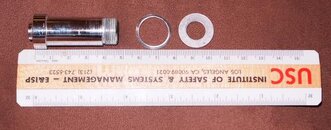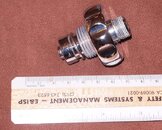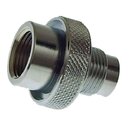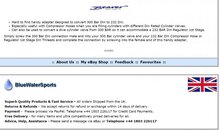R
redacted
Guest
I think the 300 BAR DIN connector is just a sales gimmick now unless you happen to have an old 300 BAR valve. I don't know why anyone would want 7 threads when 5 is overkill already. It just makes the regulator stick out farther from the valve for no good reason. I would use all 200 BAR connectors if I could find ones that would work on all of my regulators and valves.
When Scubapro replaced my CPSC recalled 200 bar din retainer on a Mk20, they also converted it to 300 bar. I assumed s 200 bar redesigned retainer was not available in the USA.







